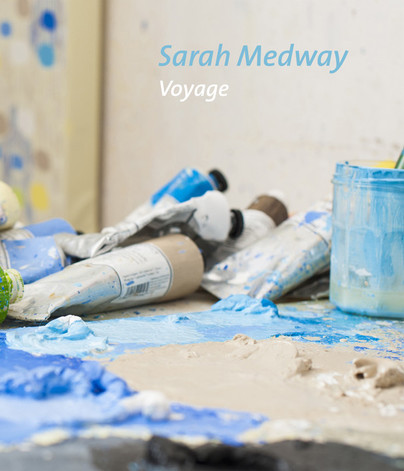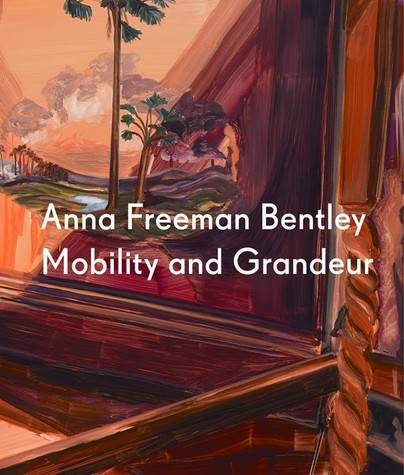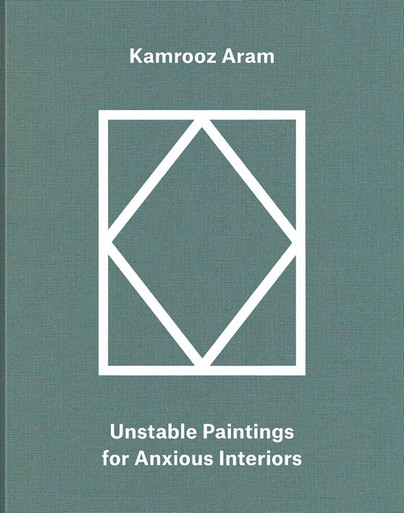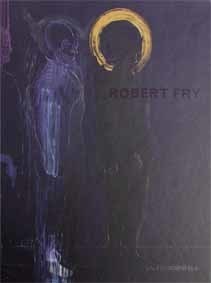Based in the UK, Anomie Publishing is an international publishing house for the arts dedicated to producing quality art books. Established by Matt Price, who has worked in arts publishing since the turn of the millennium, Anomie works in partnership with public and commercial galleries, museums, arts organisations, agencies, academic institutions, charities, collectors, established artist studios, and private clients to publish or co-publish books.

Format: Paperback
Pages: 112
ISBN: 9781910221082
Pub Date: 11 Jun 2015
Illustrations: Approx. 75 colour
Description:
Sarah Medway’s abstract paintings are a delicate, evocative and sincere investigation into the nature of light as it manifests itself through the myriad environments that surround us. She navigates us through the different seasons, sometimes on foreign shores – from the Mediterranean to Scandinavia and beyond – other times closer to her canal-side studio in central London. She leads us through different times of day and night, from dawn to dusk and long into the night.
She takes us up to the skies, into sunlight and shade, clouds and fog, rainbows and sunsets. She takes us into fields, along the coastline, and far out to sea. With her distinctive vocabulary of abstract marks and shimmering palettes, her works build into complex webs of patterns and textures that capture something of the experience of perceiving light, colour and shapes as they filter through the atmosphere into our eyes, minds, memories and subconscious.That Medway’s works take us on different journeys, into different environments and out to sea is certainly apt, as the body of work presented in this latest monograph on the artist takes the form of 56 canvases that were commissioned for display on the new P&O Cruises Britannia, the largest and highest-specification cruise ship built by the company to date, making regular voyages into the Med, to the Fjords, to the Canaries, the Caribbean and beyond. This substantial commission is one of the latest in a long line of commissions by P&O of original works of art by living artists. For the publication, specially commissioned texts by eminent art critics Andrew Lambirth and Sue Hubbard offer an illuminating and insightful introduction to Medway’s oeuvre and to this significant new series of paintings. In addition to having participated in group exhibitions at institutions including Tate Britain, the Whitechapel, the Royal Academy, the World Trade Center and Austin Museum of Art, Medway has had solo exhibitions at venues including Flowers East, London, Chelsea Hotel, New York, Kienbaum Gallery, Frankfurt, The Mandalai, Thailand, and Atelier Gallery, Spain. She has works in many public, private and corporate collections in the UK, US, Germany, Italy, Spain, Belgium, Hong Kong and Thailand. Published by Anomie, the monograph has been designed by Peter B. Willberg with James Sutton, and printed in Italy by Castelli Bolis.

Format: Hardback
Pages: 96
ISBN: 9781910221037
Pub Date: 12 Feb 2015
Illustrations: Approx. 40 colour
Description:
Anna Freeman Bentley (b. Freeman, 1982) is a painter based in London. Her practice explores the built environment, architecture, and interiors, inviting emotive, psychological, and semiotic readings of space.
With an intense, regularly dark palette and energetic yet often intricate brushwork, her paintings depict all manner of places – derelict factories and warehouses, baroque buildings, shops, cafes, and modern industrial and corporate architecture. With a particular focus on the relationships between the design of architecture, its function and use, how these uses change over time, and how streets, areas, communities, and cities decline, regenerate, and gentrify, Freeman Bentley’s practice documents the changing vocabulary of architecture and captures some of the complex dynamics, atmospheres, politics, and states of mind that these places engender. This, the artist’s first monograph, features over forty paintings spanning her career to date, offering a journey through the built environment that takes the viewer into realms as diverse as psychogeography and heteropias, romanticism and modernism. From the needs and desires of individuals to those of the different communities that make up urban life in cities and towns today, her paintings open up questions about displacement and replacement, decay and rebirth, change and transformation, public and private, social and economic mobility, aspiration and desire, buildings and people. Seeking to go beyond the visible and tangible and to explore ideas of faith and the sacred within space, Freeman Bentley’s work looks through the fabric of our physical environment to ask about what lies behind, into the dialogue between matter and spirit.The publication features newly commissioned texts by London-based curator and writer Michele Robecchi, New York-based art writer and editor Marina Cashdan, and Ben Quash, Professor of Christianity and the Arts at King’s College London. Edited by Matt Price and designed by Joe Gilmore / Qubik, this hardback monograph presents the arresting and engaging work of one of the UK’s most promising emerging painters.Freeman Bentley studied painting at Chelsea College of Art and Design before graduating with an MA from the Royal College of Art in 2010. She has had solo exhibitions in Berlin, Venice, and California, residencies in London with the Florence Trust and with Pied a Terre Michelin-starred restaurant, and participated in group exhibitions including the Prague Biennale and the inaugural East London Painting Prize, 2014.

Format: Hardback
Pages: 88
ISBN: 9781910221013
Pub Date: 21 Aug 2014
Illustrations: 50 colour
Description:
Rachel Kneebone (born 1973, Oxfordshire) is a London-based artist internationally renowned for her porcelain sculptures that intricately fuse human, natural and abstract forms to explore universal themes such as sexual desire, mortality, anguish and despair. Launched in anticipation of ‘399 Days’, Kneebone’s latest presentation at White Cube, London, in summer 2014, this publication features works from Kneebone’s acclaimed solo exhibition at Brooklyn Museum in 2012, which included eight of the artist’s works in dialogue with fifteen bronze sculptures by Auguste Rodin.Featuring a foreword by Catherine Morris and a text by Ali Smith, this beautifully designed and produced hardback publication contains over fifty colour reproductions and has been developed with support from Brooklyn Museum.

Format: Hardback
Pages: 80
ISBN: 9780957693661
Pub Date: 01 May 2014
Illustrations: Appox. 50 colour and b/w
Description:
This monograph on Iranian-born, Brooklyn-based painter Kamrooz Aram (b.1978) presents the Palimpsest series, which was in part inspired by graffiti on the streets of New York, and its constant painting-over by the authorities, only for it to become covered again in graffiti. The ongoing cycle of painting, covering-up and repainting in the urban environment connects with Aram’s long-standing fascination with modernism and the legacies of Abstract painting.
Aram explains: “The word palimpsest derives from the Greek term for a manuscript that has been scraped down so it can be reused. However, this process of erasure is always incomplete and traces of previous layers remain visible beneath the most recent marks. I find the idea of painting as palimpsest compelling because such a painting reveals its own past.” The concept of the palimpsest in relation to Aram’s practice is explored further in the publication in texts by Eva Díaz, Professor of Contemporary Art at Pratt Institute in New York, and art historian and critic Media Farzin.As discussed in an engaging interview between the artist and critic and art historian Murtaza Vali, Aram’s interest in ‘painting as palimpsest’ evolved over years of observing and photographing walls in cities across the world, from Brooklyn and Queens to Beirut and Istanbul. The worn walls of Beirut still bear the scars of the civil war, while in Brooklyn, years of graffiti and its covering-up reveal the history of New York City. This phenomenon takes on a different, but related meaning in a city such as Istanbul, where the graffiti is the result of public demonstrations related directly or otherwise to the Gezi Park protests. Aram states: “The graffiti was obviously political and so the state’s response was rapid. The protesters would write and the state would cover it up immediately.” A photo essay and text by the artist further explore notions of the palimpsest and covering-up.In the Palimpsest series, a floral motif that Aram appropriated from a Persian carpet on sale in a shop in Manhattan becomes a key element in the series, submerging and re-emerging within the many layers of accumulated and erased marks on his canvases. Working serially, the artist begins each painting with this floral form, drawn across the surface of the canvas in a grid, creating an overall pattern. Aram then begins destroying and rebuilding this pattern through a process that involves additive as well as subtractive mark-making: wiping away and scraping down the painted surface over time to reveal previous layers. The relationship between West and East, and more specifically between the United States and the Middle East, has long been a key concern in Aram’s life and work. Central to Aram’s practice to date is the interface between Middle Eastern traditions of pattern-making, decoration and ornamentation, and the 20th century Western tradition of modernist painting, with geometry often intersecting the two worlds. The mixing of these once diametrically opposed paradigms tells a more complex story in Aram’s paintings of interwoven cultures, interconnected politics, and of visual languages that collide, recede and reemerge over time.Kamrooz Aram graduated with an MFA from Columbia University, New York, in 2003. Since then his work has been widely exhibited internationally and featured in publications such as The New York Times, The New Yorker, The Village Voice, Art in America, Artforum.com, ArtAsiaPacific, and Bidoun. Aram was a recipient of the Abraaj Group Art Prize 2014. The publication, illustrated with over fifty plates, photographs and details, has been edited by Yasmin Atassi, designed by Joe Gilmore / Qubik, printed by Die Keure, Bruges, and co-published by Green Art Gallery, Dubai, and Anomie Publishing, Wakefield, UK.

Format: Paperback
Pages: 108
ISBN: 9780957693654
Pub Date: 05 Jan 2014
Illustrations: Appox. 50 colour and b/w illustrations
Description:
London and Seoul-based Korean artist Meekyoung Shin (b.1967) is internationally renowned for her sculptures that probe the mis- and re-translations that often emerge when objects of distinct cultural and historical specificity are dislocated from their original context. Made from soap, her works replicate artefacts and canonical works of art, from Asian porcelain vases to Greek and Roman sculptures, translating between continents, cultures and centuries in the process.
Meekyoung Shin was born in South Korea and completed her BFA and MFA at Seoul National University. In 1995, she moved to London to obtain her MFA at the Slade School of Art, University College London, and has since held solo exhibitions internationally including at Haunch of Venison, London (2010) and the Korean Cultural Centre UK, London (2013). She has participated in numerous group shows including at the Museum of Art and Design, New York, and the 2013 Asian Art Biennial in Taiwan. Her works are found in collections all over the world, including the Museum of Fine Arts in Houston and the National Museum of Modern and Contemporary Art, Korea. Shin was nominated for the Korea Artist Prize 2013. In this new monograph on the artist, Jonathan Watkins sets the scene for Shin’s solo exhibition at the Korean Cultural Centre UK in London in late autumn 2013, a stone’s throw from Nelson’s Column and the ‘Fourth Plinth’ commission of Trafalgar Square. Context is essential to Shin’s practice, and indeed, to her identity. As she asserts: ‘I often identify myself as someone on the border between cultures’. Watkins eloquently introduces Shin’s major bodies of work whilst capturing the cultural complexity, exquisite craftsmanship, conceptual elegance and natural wit embodied within them.An essay by Ben Tufnell explores the cultural and historical references in Shin’s work over the past fifteen years. Taking Shin’s solo exhibition at Haunch of Venison in London in 2011 as his point of departure, he opens up questions of anthropology and museology, of what is exhibited where and when, by and for whom. His incisive analysis of Crouching Aphrodite (2002) – a life-size sculpture of the artist’s own body in the pose of the classical Venus of Vienne from the Louvre – raises issues of Eastern and Western culture, of originality and copying: ‘Being neither fully Asian nor fully Roman it inhabits a cultural limbo space.’ Tufnell explains, ‘Shin’s works are not simply replicas or reproductions but strange twins, uncanny avatars of their precursors.’ Curator and art historian Kyung An’s text offers an illuminating account of Shin’s Written in Soap: A Plinth Project (2012-ongoing), which takes the form of a remarkable public art project in which the artist recreates – out of soap – a large equestrian military statue of Prince William Augustus, the Duke of Cumberland, that once stood in Cavendish Square, London. Having initiated a project that contributes to debates on public monument building, Shin then created subsequent versions of the sculpture for display in Seoul and Taipei. As An asks, ‘what becomes of the monument when it is transplanted to a national museum dedicated to modern and contemporary art five thousand miles away?’Jade Keunhye Lim’s essay unpicks the various strands of Shin’s Translation Series, from the classical Greek sculptures through to Toilet Project (2004-ongoing) – in which portrait busts made of soap are placed in the washrooms of galleries and museums for visitors to use when washing their hands – and Weathering Project (2009-ongoing), in which Shin locates her soap sculptures outdoors for them to be slowly eroded by the elements. Via cultural imperialism and the tastes of the affluent classes of the West, Keunhye Lim questions the value systems of objects and the logic of their accession into museums – questions that underpin Shin’s practice. How is beauty, cultural significance and financial value constructed, and how does this translate across cultures and time? This monograph, beautifully illustrated with over fifty colour and black and white images, was published by Anomie Publishing in collaboration with the Korean Cultural Centre UK, London, on the occasion of ‘Unfixed: A solo exhibition by Meekyoung Shin’, held at the KCC from 12 November 2013 to 18 January 2014, curated by Jonathan Watkins.Published by Anomie Publishing in collaboration with the Korean Cultural Centre UK, London.

Format: Hardback
Pages: 88
ISBN: 9780957693647
Pub Date: 13 Dec 2013
Illustrations: Appox. 60 colour and b/w illustrations
Description:
The paintings and etchings of Robert Fry (b. 1980, London) confront viewers with an engaging exploration of the human form that asks profound questions about people’s physical presence in the universe and the psychological, emotional and spiritual engagement we have with the world through our bodies. With a deep sense of civilisations past, from the prehistoric to the ancient Egyptian, Medieval and Renaissance to the Enlightenment and beyond, Fry navigates a complex visual language that bridges the figurative and the abstract in a way that is evocative of body and mind, matter and spirit, life and death.
Fry’s search for universal truths leads into dark territory, into our subconscious minds and neuroses, our deepest fears, anxieties and insecurities. Both sacred and profane, Fry’s work masterfully employs colour, mark, line, shape and form to bring us face to face with our inner and outer selves, with our humanity and, ultimately, with our own mortality.This beautifully produced publication features around sixty selected works by the artist over the course of more than fifteen years, from very early works to 2013. Following an introduction to the artist’s work by Mamuka Bliadze is an essay by the artist’s father, distinguished Consultant Psychiatrist Anthony Fry, which investigates the themes of masculinity and maleness in his son’s paintings, and in particular a series of works that refers to the Fry family, including a portrait of both Anthony and Robert Fry that seeks to unravel the complexities of the father-son relationship. A wider consideration of Fry’s practice is pursued in an essay by critic and curator Jane Neal that addresses topics ranging from Saussurean signification to automatic writing, pagan fertility symbols to archetypal human forms, twentieth-century British painting to body builders. London-based Fry has had solo exhibitions in London, Berlin and Los Angeles, and featured in numerous group exhibitions including ‘Newspeak – British Art Now’ at The State Hermitage, St. Petersburg, and ‘The Curator’s Egg’ at Anthony Reynolds Gallery, London. This, the first monograph on the work of Robert Fry, is co-published by Galerie Kornfeld, Berlin, and Anomie Publishing, UK.







